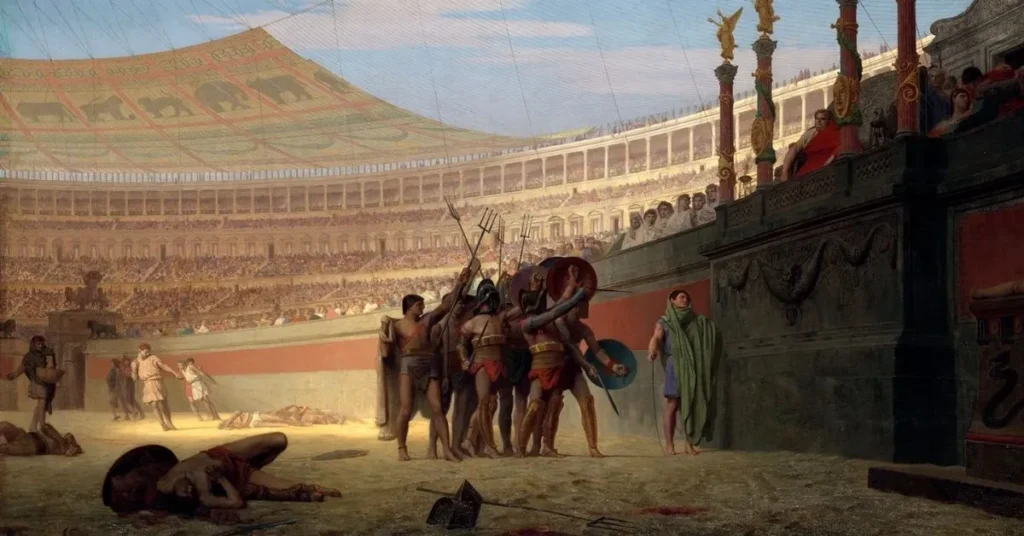Spartacus, a Thracian gladiator and key leader in the Third Servile War, orchestrated a remarkable slave uprising against the Roman Republic. Paired with Crixus, Gannicus, Castus, and Oenomaus, Spartacus emerged as a skilled military commander. While the details of his life remain obscure, historical accounts agree on his gladiatorial past and military prowess. The Third Servile War, often viewed as a struggle against a slave-owning oligarchy, has inspired political thinkers throughout history.

Plutarch and Appian, the main sources on Spartacus, wrote about him over a century after his death. They provide insights into this iconic figure, although both accounts lack eyewitness perspectives and were penned by non-slaves.
Born around 103 BC into a Thracian nomadic tribe, possibly the Maedi, Spartacus was later enslaved, trained as a murmillo gladiator, and associated with the ludus near Capua owned by Lentulus Batiatus. In 73 BC, Spartacus spearheaded a daring escape, rallying around 70 slaves. Their initial victory led to the plunder of Capua’s surroundings, recruiting more slaves and establishing a stronghold on Mount Vesuvius.
Once free, Spartacus, alongside Gallic slaves Crixus and Oenomaus, assumed leadership. Roman authors, projecting their hierarchical view, often emphasized Spartacus as the sole leader. The rebellion, though not explicitly seeking to end slavery, symbolized oppressed people fighting against a dominant slave-owning system. Spartacus’ legacy has endured through literature, television, and film, immortalizing his defiance against the Roman Republic.
Spartacus in Historical Sources
Spartacus, a central figure in the Roman slave uprising known as the Third Servile War (73–71 BC), is primarily documented in historical sources written long after his lifetime. The most notable accounts come from Appian, Florus, and Plutarch, who wrote between 150 and 225 years after the events they describe.
Plutarch’s “Life of Crassus” and Appian’s “Civil Wars,” both composed in the early to mid-Second Century AD, are key texts shaping modern narratives on Spartacus. Despite the absence of eyewitness or contemporary slave accounts, the level of detail and coherence in these sources suggests their reliance on closer, reliable information.
Cicero, a Roman statesman and orator, provides a unique contemporary reference in his speech “Against Verres,” written three years after the revolt. In it, Cicero accuses a corrupt governor of attempting to falsely claim credit for defeating fugitive slaves in Italy and attributes the victory to Crassus and Pompey.
Furthermore, Cicero, in a later speech, calls Marc Antony “an assassin, a robber, a Spartacus,” providing the oldest surviving mention of Spartacus by name. While the historical record regarding Spartacus contains contradictions and uncertainties, the coherence of the narratives and contemporary references, like Cicero’s, lend credibility to the historicity of Spartacus’ revolt and leadership in the Third Servile War.
Spartacus in the Third Servile War
Spartacus, a Thracian gladiator, became a symbol of resistance leading the Third Servile War, a significant slave uprising against the Roman Republic. The Romans initially underestimated the rebellion, considering it more a policing matter than a war. Commanded by praetor Gaius Claudius Glaber, the Roman militia sought to starve Spartacus into surrender. However, Spartacus, utilizing vine ropes, descended Mount Vesuvius, ambushed the Romans, and annihilated most of the militia.

The rebellion gained momentum as Spartacus defeated subsequent Roman expeditions. The enslaved ranks swelled to approximately 70,000, comprising various groups, including Celts, Gauls, and legion veterans. Spartacus exhibited remarkable tactical acumen, hinting at potential military experience. During the winter of 73–72 BC, the rebels trained and expanded their territory.
In the spring of 72 BC, they moved northward, prompting the alarmed Roman Senate to dispatch consular legions under Lucius Gellius and Gnaeus Cornelius Lentulus Clodianus. Despite early successes, the Roman legions faced defeat against Spartacus, compelling the Senate to assign Marcus Licinius Crassus, Rome’s wealthiest man, to quell the rebellion. With a disciplined force of over 40,000 soldiers, Crassus implemented harsh measures, including “decimation,” to instill fear.
Spartacus, retreating south, attempted to escape to Sicily, but he was betrayed by Cilician pirates. Encamped near Rhegium, he faced a prolonged siege from Crassus. As Pompey’s legions returned from Hispania to support Crassus against Spartacus, Crassus was afraid of losing credit for defeating him.
Crassus and Spartacus engaged in a final battle, leading to the complete rout of the rebels. Though the ancient historians Plutarch, Appian, and Florus claim Spartacus died during the battle, his body was never found. In the aftermath, 6,000 captured rebels were crucified along the Appian Way.
